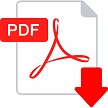METHODOLOGY FOR RATIONING MATERIAL RESOURCES FOR BUSES
V. M. Kurganov
Tver State University, Tver, Russia
e-mail: glavreds@gmail.com
M. V. Gryaznov
Nosov Magnitogorsk State Technical University, Magnitogorsk, Russia
e-mail: gm-autolab@mail.ru
A. N. Dorofeev
Financial University under the Government of the Russian Federation, Moscow, Russia
e-mail: andorofeev@fa.ru
A. A. Aduvalin
Maggortrans ME, Magnitogorsk, Russia
e-mail: aduvalin@mail.ru
Abstract. The industry standards for the consumption of material resources currently in force in road transport are advisory in nature and are used by carriers in their current work for production planning. Industry standards, regulated, for example, by order of the Ministry of Transport of the Russian Federation No. 158 dated May 30, 2019, establish resource consumption on an average for all road carriers of the Russian Federation. Taking into account the individual operating conditions of the rolling stock and the organization of the transport process is possible only by a correction factor to the fuel consumption rate, the calculation method of which is not regulated. The result is low convergence of planned and actual traffic figures.
An effective solution to this problem is the use of resource consumption rates calculated on the basis of statistical data on the consumption of material resources obtained using the means of objective control and data storage of ERP systems. This will make it possible to fully take into account the complex of significant factors that determine the volume of consumption of material resources, reduce the amount of inventory, increase the turnover of funds, and increase the accuracy of rationing and pricing processes for any trucking company.
However, the substantiation of such resource consumption norms requires an assessment of the influence of significant factors, the establishment of a relationship between them and the development of a mathematical apparatus for normalization. Therefore, the purpose of this study, which is to increase the efficiency of passenger transportation by buses based on ensuring the reliability of material resource consumption rates, taking into account individual operating conditions, is aimed at solving an urgent scientific and practical problem.
Theoretical studies are carried out on the basis of the analysis of scientific and regulatory and technical literature, the legal framework, systemic, statistical, factorial and technical and economic analysis, economic and mathematical modeling of the transport process, and expert evaluation. Experimental studies were carried out in the conditions of operating passenger transport enterprises using the methods of mathematical statistics, computer modeling, field observations.
The main results of scientific novelty are: a set of qualitative characteristics and quantitative indicators of factors that determine the consumption of material resources in the operation of the bus fleet; mathematical models for calculating the consumption rates of fuels and lubricants, spare parts and car tires, as well as the corresponding standard operating costs; dependence of indicators of operating consumption of diesel fuel, resource mileage of automobile tires on the magnitude of significant factors established for domestically produced buses of various capacities.
Further research is supposed to be carried out in the direction of the development of resource saving methods in the motor transport complex.
Keywords: buses, operating costs, resource rationing, diesel fuel, traffic speed, resource consumption.
Cite as: Kurganov, V. M., Gryaznov, M. V., Dorofeev, A. N., Aduvalin, A. A. (2022) [Methodology for rationing material resources for buses]. Intellekt. Innovatsii. Investitsii [Intellect. Innovations. Investments]. Vol. 1, pp. 102–116, https://doi.org/10.25198/2077-7175-2022-1-102.


























